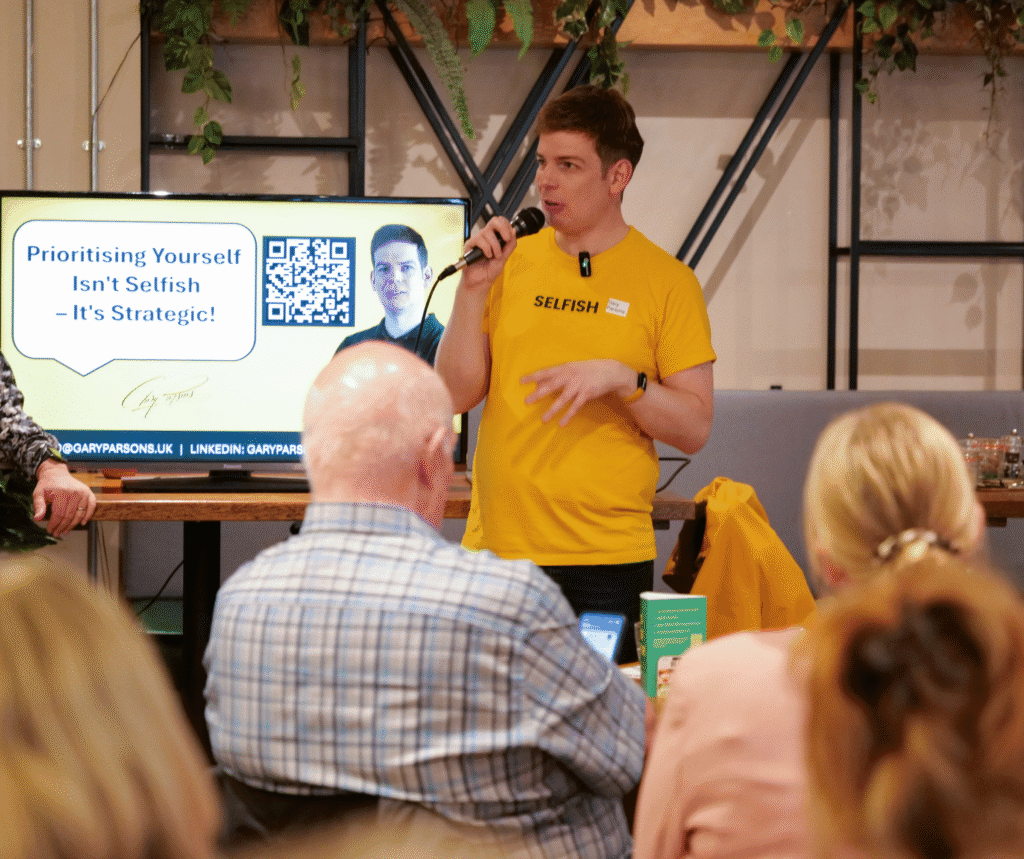6 Expert Tips for MCs & Hosts for Booking & Briefing Speakers

The Must-Have Guide to Booking and Briefing Speakers for Events
Whether you’re hosting a business conference, chairing a panel or introducing guest experts at an awards night, your success rests on more than just timing and technology. The secret lies in the details – especially how you book, brief and support your speakers.
As an MC or event host, your job is not to steal the spotlight, but to make others shine. When this is done well, speakers feel valued, the audience stays engaged and the whole event runs like clockwork.
I’ve spoken at countless events over the years, and I’ve seen everything from smooth professionalism to outright chaos. This guide includes six essential speaker briefing tips, along with a couple of hard-learned lessons that show exactly why getting this right matters so much.
Why Speaker Briefing Is Critical
Let’s get one thing clear – you’re not just putting a name on a schedule. You’re inviting a speaker to contribute to your event’s success.
If they’re under-briefed or feel like an afterthought, they’ll likely under-deliver, and the audience will notice. In contrast, a well-prepared speaker can elevate your event beyond all expectations.
So how do you ensure they’re set up for success? Here’s what you must do.
Respect the Speaker’s Introduction
A professional speaker will often provide a carefully written introduction. It’s not a sales pitch – it’s an essential part of setting the tone and preparing the audience for what’s coming.
Do this:
- Request the intro in advance.
- Practise reading it aloud.
- Deliver it exactly as written, without edits or improvisation.
That short moment before the speaker comes on stage is pivotal. It builds anticipation and connects the audience to the speaker.
Let me share a personal example.
Once, I was asked to speak at an event where the team had done everything right in advance. The welcome was warm, the venue was professional, and my name had been mentioned multiple times throughout the morning. But when the time came, the MC simply said, “OK, over to Gary.”
No build-up, no transition, just a flat handover.
I’d purposefully avoided covering my own background in the talk itself, because the intro was meant to do that. But with no setup, I had to think fast, change my plan on the fly and rework the opening of my talk in seconds. It completely threw me. I recovered, but the momentum never quite hit the level it could have. That moment matters.

Photo by on Pexels
Prioritise a Proper Audio Setup
Great content can fall flat if the audio lets you down. Your speaker needs to be heard clearly and feel comfortable moving on stage.
Best practices:
- Schedule a calm soundcheck before their session.
- Use wireless, over-ear microphones with a belt pack.
- Choose a setup where the speaker can mute themselves if needed.
Avoid handheld mics or anything with a trailing cable – they restrict movement and disrupt flow. This small detail can have a huge impact on delivery.
Let the Speaker Own the Final Word
After a speaker finishes, resist the urge to summarise their content. It may seem like a nice touch, but it can backfire.
Most speakers carefully craft their conclusion to leave the audience with a lasting impression. If you recap, rephrase or reframe it, you risk diluting or even contradicting the message.
Simply thank them, let the applause carry, and move on. Trust that they’ve done their job well.
Provide Context and Clarity Before the Event
A speaker can tailor their talk far more effectively if they understand the bigger picture.
Provide these details in advance:
- Audience profile – industry, seniority, expectations.
- Event theme or messaging.
- Schedule or flow – what comes before and after.
- Format – theatre, round tables, cameras, live stream?
The more context a speaker has, the more integrated and relevant their message will be. It’s the difference between a disconnected slot and a powerful, coherent session.

Assign a Dedicated Point of Contact
On event day, things move fast. Your speaker should never have to ask random staff or wander backstage looking lost.
Assign one clear contact to manage:
- Arrival, registration and briefing.
- AV tech checks and slide setup.
- Cue timings and any last-minute updates.
Having a single point of contact not only reduces confusion, it also shows respect for the speaker’s time and presence.
Here’s why this matters.
I once agreed to arrive at an event an hour before my session, which was fine by the client. To keep costs down, they didn’t want me there all day – perfectly understandable. But no one sent me any contact numbers.
As I walked down the street towards the venue, I received a panicked message from an unknown mobile number: “Where are you?!”
People were clearly stressed. From their perspective, I looked like I was cutting it fine or hadn’t communicated. In reality, I was right on time. But the mood on arrival was tense, which throws you off before you even get to the mic.
Fortunately, the session went brilliantly and the feedback was outstanding. But the stress was entirely avoidable.
Schedule Time for a Rehearsal or Walkthrough
Even experienced speakers appreciate a quick stage run-through. This is especially important if:
- The venue layout is unusual.
- There are multiple screens or remote clickers.
- Timing or cueing is strict.
Just 15 to 30 minutes of rehearsal gives speakers confidence. It allows them to test slides, walk the stage and know where to stand, sit or exit. That familiarity can make a world of difference.

Extra Advice Based on Experience
- Feed your speakers (or tell them where they can eat)
You don’t need to roll out a red carpet, but a simple “here’s where to grab a coffee or a bite” makes them feel welcome and comfortable.
- Be clear on content boundaries
If there are topics to avoid or messages that need to be aligned, communicate that. Don’t let your speaker walk into a sensitive topic unprepared.
- Explain the Q&A format
Let speakers know if there will be audience questions, how they’ll be submitted, and whether someone will moderate. Avoid putting them on the spot with unexpected formats.
My Final Thoughts
When you book a speaker, you’re entering into a partnership. It’s not just about handing them a mic – it’s about setting them up for success, so they can deliver a message that sticks.
A well-briefed speaker performs better. They feel like part of the event, not a spare part. And the audience will thank you for it.
As the MC or host, you’re the glue holding the segments together. Make it seamless. Make it smart. And above all, make it professional.
Because when you get this right, everyone shines.
⸻
FAQs
- What should I include in a speaker briefing? Audience demographics, session timings, venue details, AV setup, and any required content themes or restrictions.
- Can I rewrite the speaker’s intro for clarity? No. Use the exact version they provide unless they explicitly tell you otherwise.
- Is it acceptable to comment on the speaker’s message afterwards? Keep it brief. Thank them, maybe mention one takeaway, but avoid rehashing their entire talk.
- What microphone should I give my speakers? Wireless headset mics with belt packs are best. Avoid handhelds unless absolutely necessary.
- Should every speaker do a stage rehearsal? Yes. It builds confidence, helps them get their bearings, and ensures everything runs smoothly.
- What’s the risk if I skip a detailed briefing? Confusion, delays, missed cues, or even public embarrassment. Briefing isn’t optional – it’s essential.
